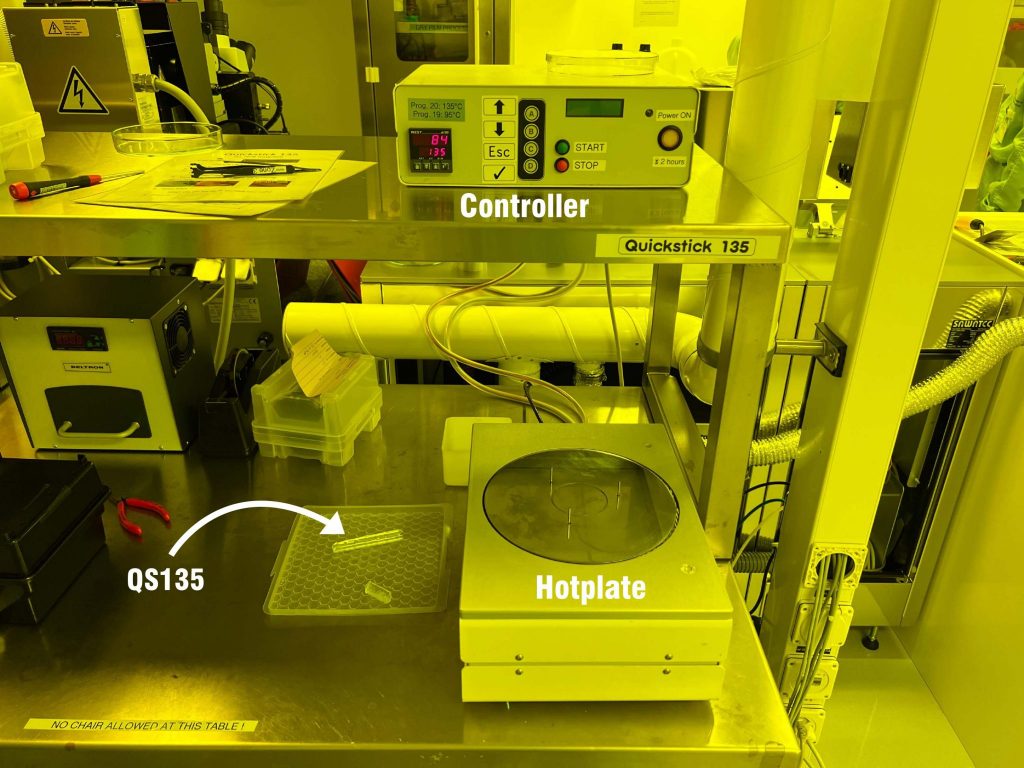
Quick stick 135 (QS135) is a wax used for temporary sticking of a wafer, or pieces of wafer, on a dummy wafer in order to make processing like photolithography or etching.
It is mainly used for:
- Photolithography on a fragile wafer or wafer with holes or deep cavities on the back side
- Dry etching on chips
Main advantages :
- Easy to process
- Easy to clear with acetone
- Strong enough to maintain assembly in a coater at more than 6800rpm
- Temperature-resistant : even if melting point is around 100°C, can be used at temperatures up to 200°C for a few minutes (e.g.: compatible with soft bake of LOR)
- Safe to use / non-toxic
- Vacuum compatible
QS135 features :
- Thermoplastic polymer
- Softening point at 70°C
- Flow point at 135°C
- Viscosity at flow point : 6 000 cps
- Transparent
Where/how to use :
In Zone 13, on the dedicated hotplate and the Arias Solvent bench, following the instructions in the user manual (physical version can be found next to the hotplate).

More information :
Priming before photolithography
It is possible to put assembled wafers with Quick Stick in HDMS or Ti Prime oven.
Photolithography
All the photolithography processes in automatic coater/developer are compatible with QS135. Adhesion is strong enough to keep the two parts stuck together even with high rotation speed in coater bowl. Lift-off process with a layer of LOR is also possible, even though the soft-bake is at 190°C.
To exposed QS135 assembly, please contact the lithography engineers for more information.
Etching
QS135 can be used in all dry etcher, but make sure it is not exposed to plasma unnecessarily to avoid reaction between gas and wax.
You must pay particular attention to the dummy wafer you should use. For instance, if you want to etch silicon on a small sample, you must use an oxidized wafer in order to reduce the surface area of silicon exposed to plasma.
Not suitable for wet etching.
Thin Film Deposition
It should be possible to use all equipment as far as the process is done at room temperature. Please contact the thin-film engineers for more information before any trials.